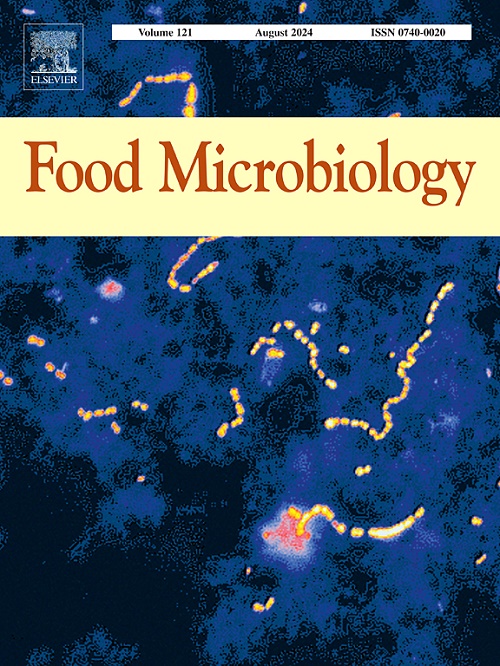对英国 Hearts 牛奶库七年来的母乳捐赠者进行微生物分析
IF 4.5
1区 农林科学
Q1 BIOTECHNOLOGY & APPLIED MICROBIOLOGY
引用次数: 0
摘要
根据世界卫生组织的建议,当无法获得母乳时,来自母乳库(HMBs)的捐献人乳(DHM)是最佳替代品。人乳中的微生物群可能含有机会性病原体,因此建议在巴氏灭菌前对人乳进行严格的微生物筛查,以保障受体的安全。在此,我们对2017年至2023年期间心乳库1419名捐献者的6863份DHM样本进行了分析,结果显示约70.1%的样本总存活计数(TVC)在10³-10⁵ CFU/mL之间,18.3%的样本没有生长;11.5%的样本超过了10⁵ CFU/mL的阈值。葡萄球菌是最常见的菌属,61.5%的样本中发现了表皮葡萄球菌。在表皮葡萄球菌和革兰氏阴性机会致病菌之间观察到了明显的负共存现象(p < 0.05)。总体而言,16.8% 的 DHM 样品不符合英国微生物筛查标准,其中 68.3% 的不合格原因是超过了 TVC 临界值。表皮葡萄球菌约占不合格样本总数的 10.2%。大多数 DHM 样品符合英国国家健康与护理优化研究所(NICE)临床指南(CG93)"献乳库:服务运营 "中规定的现行微生物标准。DHM 中的核心物种反映了通常在皮肤上发现的微生物。这些研究结果突出表明,英国目前的阈值和标准有可能进行修改,以在不增加微生物风险的情况下增加 DHM 的可用供应量。本文章由计算机程序翻译,如有差异,请以英文原文为准。
Microbiological analysis of donor human milk over seven years from the Hearts Milk Bank (United Kingdom)
When maternal milk is unavailable, donor human milk (DHM) from human milk banks (HMBs) is the optimal alternative, as recommended by the World Health Organisation. The microbiota of DHM could contain opportunistic pathogens, which means rigorous microbiological screening for DHM, prior to pasteurisation, is recommended to safeguard recipients. Here, an analysis of 6863 DHM samples from 1419 donors at the Hearts Milk Bank between 2017 and 2023 showed approximately 70.1% of samples exhibited a total viable count (TVC) between 10³-10⁵ CFU/mL, while 18.3% yielded no growth; 11.5% of samples exceeded the 10⁵ CFU/mL threshold. Staphylococcus was the most prevalent genus, with S. epidermidis found in 61.5% of samples. A significant (p < 0.05) negative co-occurrence was observed between S. epidermidis and Gram-negative opportunistic pathogens. Overall, 16.8% of DHM samples failed to meet UK microbiological screening criteria, with 68.3% of these failures due to exceeding TVC thresholds. S. epidermidis accounted for approximately 10.2% of the total failed samples. The majority of DHM samples met the current microbiological criteria specified in the National Institute for Health and Care Excellence (NICE) clinical guidance (CG93), “Donor milk banks: service operation”. The core species in DHM reflects microorganisms typically found on the skin. These findings highlight that the current UK thresholds and criteria could potentially be modified to increase the available supply of DHM without increasing microbiological risk.
求助全文
通过发布文献求助,成功后即可免费获取论文全文。
去求助
来源期刊

Food microbiology
工程技术-生物工程与应用微生物
CiteScore
11.30
自引率
3.80%
发文量
179
审稿时长
44 days
期刊介绍:
Food Microbiology publishes original research articles, short communications, review papers, letters, news items and book reviews dealing with all aspects of the microbiology of foods. The editors aim to publish manuscripts of the highest quality which are both relevant and applicable to the broad field covered by the journal. Studies must be novel, have a clear connection to food microbiology, and be of general interest to the international community of food microbiologists. The editors make every effort to ensure rapid and fair reviews, resulting in timely publication of accepted manuscripts.
 求助内容:
求助内容: 应助结果提醒方式:
应助结果提醒方式:


